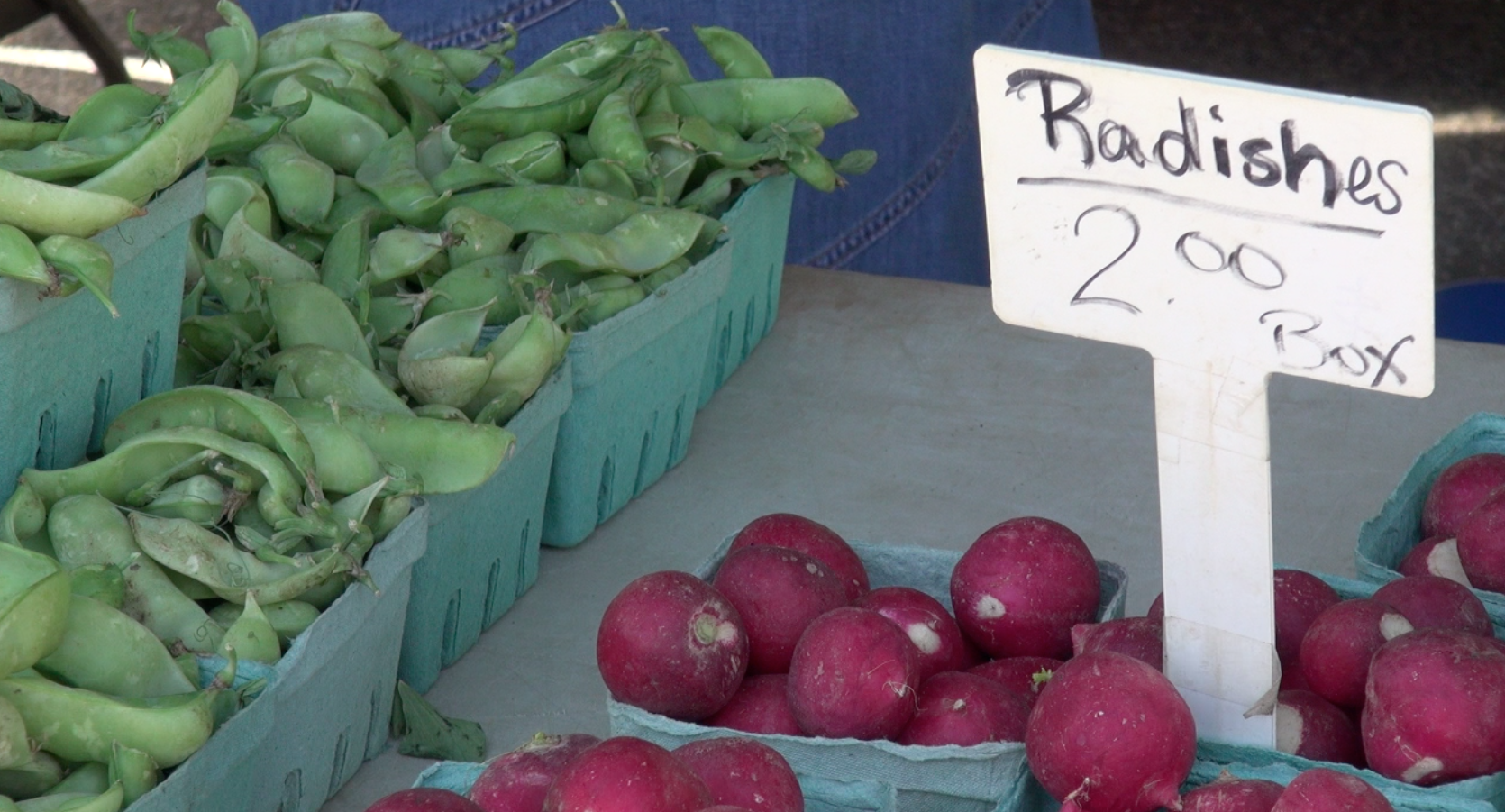WASHINGTON – A new city-funded program is promoting the purchase of healthy fruits and vegetables among District residents who live in areas with few grocery stores and limited access to farmers markets.
The program, called Produce Plus, provides $10 checks for residents of the District to use at farmers markets around the city. The checks were distributed to community organizations in targeted areas last week.
“The District has several known food deserts, or pockets where access to healthier foods is limited,” said Amelia Peterson-Kosecki, chief of the nutrition and physical fitness bureau at the D.C. Department of Health. “And so this program is going to offer some residents an ability to receive fruit and vegetable checks that they can use to increase their daily consumption.”
Including fruits and vegetables regularly in one’s diet is encouraged by federal dietary guidelines. Many Washington residents struggle to do so, according to a 2011 report from the Food Research and Action Center, a national nonprofit.
The report, which was based on the Gallup-Healthways Well-Being Index, a national, survey-based index, found that one in eight residents of the nation’s capital struggle to get access to fruits and vegetables.
According to Alexandra Ashbrook, director of DC Hunger Solutions, an initiative of the Food Research and Action Center, “food deserts” may be partially to blame.
Food deserts show up as a consequence of food retailers’ unwillingness to locate in certain areas of a city due to a variety of factors, which may include a perception of poor sales prospects or heavy crime.
Ashbrook said limited transportation options may keep residents of food deserts from making a trek to somewhere they can buy fresh food.
“In some neighborhoods, it’s a very serious problem that there’s nothing within walking distance,” she said.
The U.S. Department of Agriculture identifies a “food desert” after gauging variables, including ease of access to healthy food — measured by distance to a store or number of stores in an area — as well as household income and average neighborhood income.
Some of the District’s food deserts are located in Southeast and Southwest D.C., where access to farmers markets is limited.
“Most of the farmers markets in D.C. are concentrated in the northwest area, the northeast area – and very few are in the southeast, southwest area,” said Sabrina Lewis, coordinator of the Produce Plus program for the city.
The program’s goal is to get residents of these areas to travel to farmers markets in other parts of the city. Distributing the program’s $10 checks at community organizations in their neighborhoods encourages such mobility, she said.
Distribution locations include housing complexes, nonprofit organizations, and educational clinics for participants in programs like the Supplemental Nutrition Assistance Program for Women, Infants and Children.
Lewis says she’s optimistic about getting results. She thinks individuals will see the checks as an opportunity for “a bonus in [their] life.” It may help people break their routines and try something new, she said.
Individuals are eligible to claim the $10 Produce Plus checks if they are a recipient of a federal low-income benefit program such as food stamps, Medicaid or Temporary Assistance for Needy Families. The benefit is intended to be used once per household per market visit.
The program is scheduled to run at participating farmers markets across the district until Sept. 30, or until the $200,000 funding runs out. Of the city’s roughly 40 markets, 29 are currently participating, according to the city.
Peterson-Kosecki said the city is anticipating that all of the money will be spent this summer.
“We’re really excited to see how fast [the checks] go,” she said.

